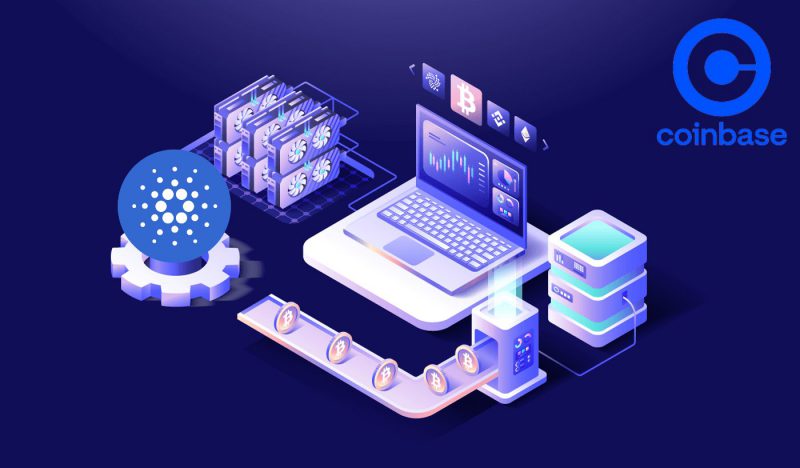In late March 2022, Coinbase, the prominent crypto exchange, expanded its staking initiatives by allowing users to stake Cardano’s ADA token.
Upon launch, the crypto exchange predicted that staked Cardano (ADA) would yield around 3.75% yearly percentage yield. Customers would get rewards to their account every five to seven days after an initial holding period of 20 to 25 days.
Although staking has become a popular investment strategy, many may still be oblivious to what it means, and how one can take their Cardano (ADA) tokens.
What is staking?
Staking is a process where token holders deposit a number of tokens in order to become active participants in the network’s operation. They take on the function of “validators” (also known as “stakers”), whose job is to propose and validate new data for the blockchain.
People are picked at random to upload new data to the blockchain, and those chosen are rewarded for their efforts. To decrease the number of spammers on the network, individuals who store more coins have a better chance of being chosen. It’s similar to a lottery system, in which one ADA is equivalent to one lottery ticket. The more ADA you wager, the more likely you are to be chosen.
While individuals can stake Cardano on their own or through a delegated staking service, the procedure can be difficult and time-consuming.
Coinbase, on the other hand, provides a simple and secure mechanism for any retail customer to join the Cardano network and earn rewards.
How to stake your Cardano (ADA) tokens on Coinbase?
Users may start earning rewards immediately on their ADA tokens with Coinbase staking. To get started, users can simply buy Cardano (ADA) on Coinbase or deposit the tokens from an external wallet into their Coinbase account. Users will begin earning rewards right away.
On Coinbase, the current anticipated annual return for Cardano staking is around 3.75 percent APY. After the initial holding period (20–25 days), users will receive prizes every 5–7 days in their account.
Second, users are always in command. Their Cardano remains in their account at all times; they essentially earn rewards while keeping their cryptocurrency safe on Coinbase. Users can also opt-out at any moment.
The underlying return rate is decided by the Cardano network based on the number of staking players. Coinbase keeps a commission and distributes the profit to clients.
Is it lucrative to stake ADA tokens?
There are always risks associated with any sort of investment. The token plummeting to zero is the first and most evident risk connected with staking any crypto asset.
Interest rate fluctuations are a more specific risk. Pools with a higher number of participants will have a lower interest rate than those with fewer. Because there are more people in a larger pool, the prizes can be distributed more evenly.
Another disadvantage of staking is that you can’t utilize the delegated ADA while it’s locked up, though you can shift it at any moment.
Users can use the ADA Staking Calculator to calculate how much they would get with their staked tokens. Of course, this is dependent on a variety of factors, including the fees charged by each staking pool, the number of members in the pool, and the number of blocks successfully suggested by the pool.
Cardano has lost a lot of trust among its users as the project has time and time again failed to meet its promises. Although the asset boasts a lot of utility, it has yet to prove its worth in the same regard.
At press time, Cardano (ADA) was trading at $0.934452.





